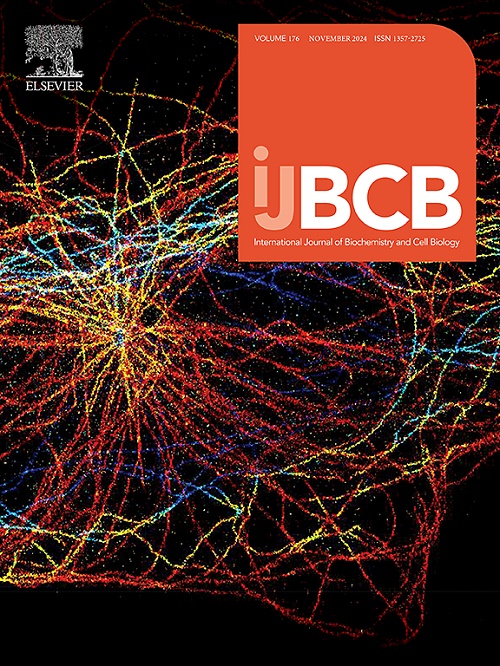抑制tim-3在癌症、病毒感染和自身免疫性疾病中的治疗潜力。
IF 2.8
3区 生物学
Q2 BIOCHEMISTRY & MOLECULAR BIOLOGY
International Journal of Biochemistry & Cell Biology
Pub Date : 2025-07-01
DOI:10.1016/j.biocel.2025.106826
引用次数: 0
摘要
TIM-3 (T细胞免疫球蛋白和粘蛋白结构域蛋白-3)是一种有效的检查点受体,可作为免疫反应的负调节因子。许多免疫细胞,包括单核细胞、TH17 (T辅助性17)细胞、肥大细胞、骨髓细胞和Treg(调节性T)细胞,都表达TIM-3。它由四种配体组成:HMGB1(高迁移基团蛋白B1)、PtdSer(磷脂酰丝氨酸)、半乳糖凝集素-9和CEACAM-1(癌胚抗原细胞粘附分子1)。研究表明TIM-3在癌症、慢性病毒感染和自身免疫性疾病中的作用。因此,抑制TIM-3是目前免疫治疗的一种治疗方法,特别是与其他免疫检查点抑制剂联合使用时。现就其在不同疾病中的作用及其潜在的信号机制作一综述。本文章由计算机程序翻译,如有差异,请以英文原文为准。
Therapeutic potential of TIM-3 inhibition in cancer, viral infections, and autoimmune disorders
TIM-3 (T cell immunoglobulin and mucin domain protein-3) is a potent checkpoint receptor that functions as a negative regulator of the immune response. Numerous immune cells, including monocytes, TH17 (T helper 17) cells, mast cells, myeloid cells, and Treg (regulatory T) cells, express TIM-3. It consists of four ligands: HMGB1 (High Mobility Group Protein B1), PtdSer (Phosphatidylserine), Galectin-9, and CEACAM-1 (Carcinoembryonic Antigen Cell Adhesion Molecule 1). Research has shown TIM-3's role in cancers, chronic viral infections, and autoimmune disorders. Inhibiting TIM-3, therefore, is a therapeutic approach in the current immunotherapy, particularly when combined with other immune checkpoint inhibitors. The review summarizes its function in different disorders and its potential signaling mechanisms.
求助全文
通过发布文献求助,成功后即可免费获取论文全文。
去求助
来源期刊
CiteScore
8.10
自引率
0.00%
发文量
124
审稿时长
19 days
期刊介绍:
IJBCB publishes original research articles, invited reviews and in-focus articles in all areas of cell and molecular biology and biomedical research.
Topics of interest include, but are not limited to:
-Mechanistic studies of cells, cell organelles, sub-cellular molecular pathways and metabolism
-Novel insights into disease pathogenesis
-Nanotechnology with implication to biological and medical processes
-Genomics and bioinformatics

 求助内容:
求助内容: 应助结果提醒方式:
应助结果提醒方式:


